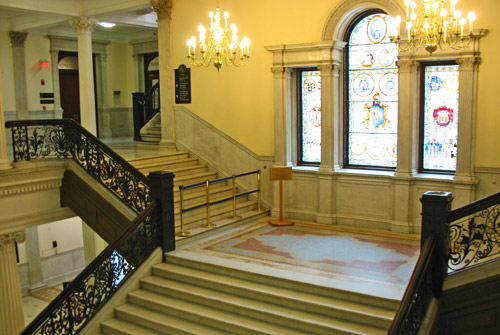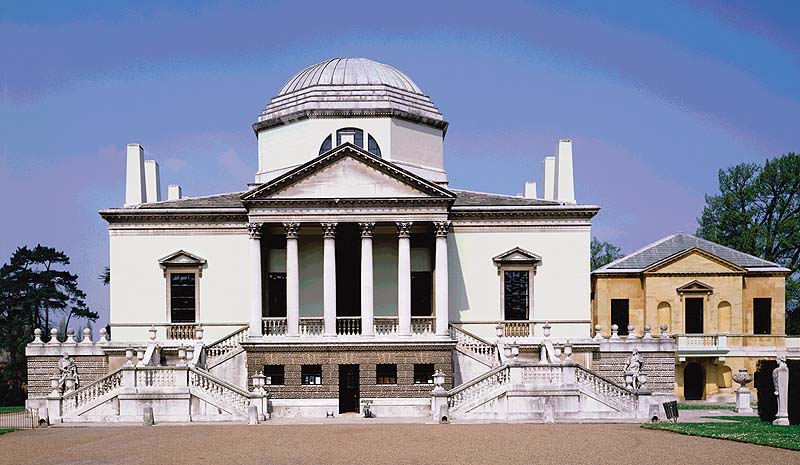A lot of this wealthy furniture style had a lot of repetition, balance, symmetry and many other principles and elements of design which we have discussed in class. Looking at thedesk/bookcase w/ chinoiseri I noticed a lot of repetition of patters as well as the material that was used. A lot of this furniture were not just simple material, but gold or silver and precious minerals that were used to make this fancy furniture. Late 17th century southern European mirrors are usually of rectangular form, with the central plates invariably bevelled or chamfered at the edges and contained within mirrored borders; the plates are often engraved or etched with mythological or pastoral scenes. The carved frames, either giltwood or silvered, usually display a Baroque exuberance, with acanthus, putti, masks, and cornucopias. Late 17th-century northern European mirrors were often conceived of as dressing mirrors, designed en suite with matching dressing tables and torcheres candle stands. Of rectangular form, frequently with convex or cushion moulded frames and usually crowned by shaped crestings, which was often similarly carved, these late 17th-century mirrors display remarkable inventiveness in their use of materials. The production of larger plates led to the introduction of pier glasses, placed between the window piers, the culmination of which are the mirrors in the Galerie des Glaces at the palace of Versailles. Although Paris’s lead was followed throughout Europe, particularly in Italy, Britain, and Germany, with mirrored borders often enriched with coloured or engraved glass, the plates were almost always divided.
Chiswick House is a Palladian villa situated in Burlington Lane, Chiswick, in London England. Its floor plan is very symmetrical and is pretty much mirrored meaning that half of the floor plan was designed and just mirrored, what's happening in the left is the same as on the right in terms of its room locations and orientations. It also has two suites of apartments around an octagonal domed saloon. The sequence of variously shaped rooms, round, octagonal and apsidal ended, reappears at Holkham Hall, Norfolk, and influenced Robert Adam. On the exterior, tastefully selected openings punctuate the neutral wall surface. The recessed Venetian windows of the rear faade were to have a long history in Palladian building
Holkham Hall is one of England's finest examples of the Palladian revival style of architecture, and severity of its design is closer to Palladio's ideals than many of the other numerous Palladian style houses of the period. The interior of the Hall is opulently, but by the standards of the day, simply decorated and furnished. Ornament is used with such restraint that it was possible to decorate both private and state rooms in the same style, without oppressing the former. The main entrance is through the Marble Hall, which leads to the piano, or the first floor, and state room. The most impressive of these rooms is the saloon, which has walls lined with red velvet. Each of the major state rooms is symmetrical; for some, false doors are necessary to achieve this effect.
[2]
Most colonies from the United States of America were inspired and designed or I should say borrowed the designed from European architecture, even here at UNCG you see a lot of variety of European style of architecture mostly from Italy and Greece.
As Roth estate "The Renaissance building exists to be admired in its splendid isolated perfection" from pg 397. Buildings from this era were admired because of every new building technique, symmetrical floor plans, repetition of patters and much more.

Hand carved wooden Palladian artifact with foxed mirror and aged gold highlights manufactured by John Richard furniture.

Palladian window and grand staircase in Massachusetts State House
 |
Exterior view of Drayton Hall, located west of Charleston, South Carolina. The mansion is the oldest surviving example of Georgian Palladian architecture in the United States.
[3]
Floor plan of a possible Palladian villa inspired by Girolamo Frescobaldi’s Balletto Terzo. The design was based on knowing that Palladio was known and recognized for using geometrical patterns and most of his buildings were very symmetrical like the Villa Capra
[4] The baroque period has always been characterized and defined as the dominant style of art in Europe between the Mannerist and the Rococo eras because of its dynamic movement, dramatic light and dark, dynamic figures, and so on. Most of the interiors were dramatic in terms of lighting effects just like in the altar of Sant'Andrea al Quirinale shown above. Much of its lighting focus and go to one direction which is the altar, but the idea is not the altar, the idea is based on theater design which makes the center of the building light up and get a more sense of a theater. Perhaps lighting was used to focus on one certain object, direction or artifact to make it stand out or bring it to life.





some good observations about the first two matrices. expand your answer on 4.
ReplyDelete